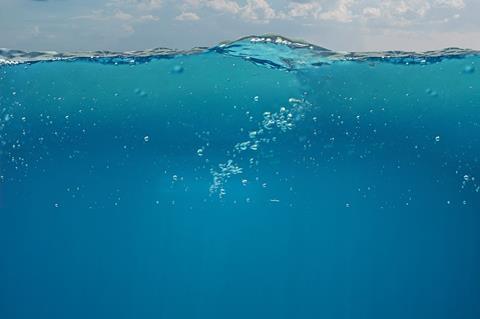The movement of carbon dioxide (CO2) from the surface of the ocean, where it is in active contact with the atmosphere, to the deep ocean, where it can be sequestered away for decades, centuries, or longer, depends on a number of seemingly small processes.

One of these key microscale processes is the dietary preferences of bacteria that feed on organic molecules called lipids, according to a journal article, ”Microbial dietary preference and interactions affect the export of lipids to the deep ocean,” published in Science.
READ MORE: For microscopic organisms, ocean currents act as ‘expressway’ to deeper depths
READ MORE: Marine microbial populations: Potential sensors of the global change in the ocean
“In our study, we found incredible variation in what the different microbes preferred to digest. Bacteria seem to have very distinct diet preferences for different lipid molecules. This has real implications for understanding carbon sequestration and the biological carbon pump,” said journal article co-author Benjamin Van Mooy, a senior scientist in the Marine Chemistry and Geochemistry Department at the Woods Hole Oceanographic Institution (WHOI). “This study used state-of-the-art methods to link the molecular composition of the sinking biomass with its rates of degradation, which we were able to link to the dietary preferences of bacteria.” The biological carbon pump is a process where biomass sinks from the ocean surface to the deep ocean.
Sinking to the depths
“Bacteria isolated from marine particles exhibited distinct dietary preferences, ranging from selective to promiscuous degraders,” the article states. “Using synthetic communities composed of isolates with distinct dietary preferences, we showed that lipid degradation is modulated by microbial interactions. A particle export model incorporating these dynamics indicates that metabolic specialization and community dynamics may influence lipid transport efficiency in the ocean’s mesopelagic zone.” The mesopelagic zone extends about 200-1000 meters below the ocean surface.
Two technologies
“I was thrilled to see how much there is to learn about the functioning of the ocean by combining two technologies– high-end chemical analysis and microscale imaging–that have historically never been used together”, said co-author Roman Stocker, professor at the Institute of Environment Engineering, Department of Civil, Environmental and Geomatic Engineering, ETH Zurich, Switzerland, “I believe that work at the interface between the exciting technologies we now have available in microbial oceanography will continue to yield important insights into how microbes shape our oceans, now and into the future.”
“Scientists are starting to understand that lipids in the ocean can vary significantly depending on different environments, such as the coast versus the open ocean, and the season,” said Van Mooy. “With this information, researchers can start to consider whether there are places in the ocean where lipids sink and are sequestered very efficiently, while there may be other locations where lipids are barely sequestered at all or are very inefficiently sequestered.”
Specific food preferences
“What excites me about this paper is that it shows bacteria are not just eating any type of lipid, but are very specialized and, like us, have specific food preferences,” said article co-author Lars Behrendt, associate professor and SciLifeLab fellow at the Science for Life Laboratory, Department of Organismal Biology, Uppsala University, Sweden. “This changes how we think about how microorganisms consume food in their natural environment and how they might help each other or compete for the same resource. It also supports the idea that combinations of bacteria better break down specific compounds, including lipids, or to achieve other desired functions.”
In addition to studying specific bacteria species in isolation, the researchers also looked at how dietary preference affects degradation rates by multispecies communities of bacteria, which they stated is ecologically more relevant than species in isolation. The researchers found that simple synthetic co-cultures exhibited different degradation rates and delay times when compared to monocultures. The researchers also noted that the degradation of particulate organic matter in the natural environment is even more complex than what is described in the study.
Digestive system
“Phytoplankton are the main reason the ocean is one of the biggest carbon sinks. These microscopic organisms play a huge role in the world’s carbon cycle - absorbing about as much carbon as all the plants on land combined,” said co-author Uria Alcolombri, senior lecturer, Alexander Silberman Institute of Life Sciences, Department of Plant and Environmental Sciences, The Hebrew University of Jerusalem, Israel. “It’s fascinating that we can study tiny microbial processes under the microscope while uncovering the biological factors that regulate this massive ‘digestive system’ of the ocean.”
Major funding for this research was provided by the Moore Foundation, Simons Foundation, and National Science Foundation. Additional support was provided by the European Molecular Biology Organization, Natural Sciences and Engineering Research Council of Canada, Canada Foundation for Innovation, Human Frontier Science Program, Canada Research Chair from the Canadian Institutes for Health Research, Independent Research Fund Denmark, Swedish Research Council, Science for Life Laboratory, European Union’s Horizon 2020 Research and Innovation Programme, and Swiss National Science Foundation.







No comments yet